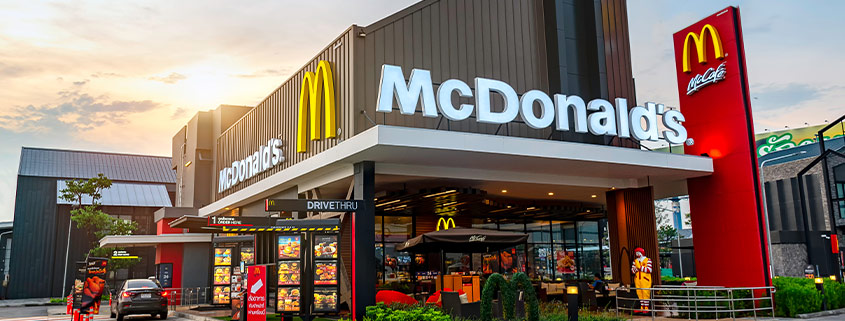Policymakers around the world are seeking legal methods of controlling the obesity epidemic. Obesity is the triggering factor for other chronic diseases such as diabetes and hypertension. In fact, in the current pandemic, population groups suffering from these underlying diseases are at greater risk of catching the highly-infectious virus and succumbing to it.
The United States is one of the first countries to introduce calorie labels. The US government has made provisions in the 2010 Affordable Care Act to implement the new calorie labeling law. The policy came into effect in 2018 after a 15-year-long campaign. It is important to understand the implications of calorie labelling law and proposed policy changes in India.
Possible Impact on Public Health
The purpose is to alter public behaviour when it comes to food choices and habits. If the consumers are well-informed about the calorie and nutrient content of various food items & beverages, they will be able to make healthier choices. The calorie labeling law is meant to serve as a tool for people to eat wisely. It may not solve the problem completely, but it is a start.
Public health experts have been lobbying for calorie labeling on restaurant menus for several years. It is because an increasing number of people eat outside more than ever. While doing so, they are not mindful of the number of calories they are consuming. Most restaurant foods have high-calorie content contributing to the aforementioned obesity problem.
Which Food Chains Are Affected

According to the Food and Drug Administration (FDA) guidelines, food chains located at more than 20 places across the United States need to specify calories next to prices or names of beverages and foods. Following chains are required to display calorie content:
- Convenience stores
- Groceries
- Chain coffee shops
- Chain restaurants
- Movie theatres
- Salad bars
- Buffets
- Self-service food locations
- Ice cream shops
- Amusement parks
Role of Food Advertisement

Due to globalization of fast-food chains, unhealthy foods receive worldwide promotions and advertisements. The publicity makes it even more difficult for consumers to make healthy decisions. Calorie labeling on restaurant menus, including drive-through menus, will increase the awareness of consumers.
According to a survey conducted over 1817 respondents in the US, a whopping 81% of them support calorie labeling. Before the nation-wide law was brought into effect in 2018, New York was the first city to approve calorie labeling back in 2008. As per a cross-sectional study conducted in Philadelphia, diners consumed 151 fewer calories compared to diners outside Philadelphia where the law did not exist.
Addressing Disparities
Some studies contradict the impact of calorie labels. One of them found minimal difference in calorie intake by fast-food diners before and after the law was enacted in New York. However, when researchers focused their studies on specific fast-food chains, they found that diners purchased fewer calories at KFC and McDonald’s as opposed to Subway and other chain restaurants.
The difference in calorie intake is not significant in low-income groups. It means that higher-income groups are more likely to benefit from the calorie labels. However, the results are subjected to diverse study methods, populations, regions, and restaurants. Since the law has now made it mandatory on the national level, more studies are required to investigate the long-term data.
The Bigger Picture
People sceptical about calorie labels are missing the bigger picture here. The intent is to increase consumer awareness, change social norms, encourage eating less and discourage eating out. Despite mixed findings, calorie labels have an overall positive impact on public health. Even if the legislation does not change the consumer behaviour appreciably, restaurant owners are compelled to make changes that ultimately support public health interests.
Let’s understand how calorie labeling affects the restaurant industry:
How Big Brands Are Adapting

Restaurant chains across the United States have given positive responses to the law. For instance, McDonald’s has now included salads in children’s Happy Meals as substitutes for French fries. On the other hand, Burger King offers low-calorie French fries for its consumers in the US. Moreover, Taco Bell is considering lowering the total calorie content of a few food items on the menu.
Restaurant chains are required to display separate calorie information for add-ons such as salad dressings so that diners can opt-out of it if they want to. In addition, some restaurants have added food items of smaller portion size without making any changes in the popular items. It is because remodeling popular menu items are not only expensive but can cost them, regular customers. Therefore, positive industry changes can be more effective instead of directly shifting consumer behaviour.
Where Does India Stand
The average daily intake should be about 2000 calories. Did you know that one masala dosa contains about 1000 calories? That’s about 50% of the recommended daily intake in just one meal! Research suggests that food pictures may appear less appetizing if diners have calorie information.
The Food Safety and Standards Authority of India (FSSAI) has issued new draft regulations regarding packaging and labeling. According to their latest regulations, restaurants operating in more than 10 locations across India have to “display the calorific value of each of the food items sold by them on their menu cards or boards”.
FSSAI is also planning to include food aggregators and online food-delivery platforms under these draft regulations. These rules, however, are more applicable to custom dishes compared to others where ingredients and recipes can vary dramatically. Additionally, poor calorie literacy will be a major challenge in the near future.
What Does the Future Hold?
Calorie labeling on restaurant menus is the first step towards managing the obesity epidemic. The disparities have to be taken into account before the law is enacted in India as well. Further, studies will reveal the long-term benefits of calorie labeling on the population. Just like cigarette packets have warnings printed on them, calorie content information will boost awareness, to say the least.
It is important to create an ecosystem which promotes healthy eating for the law to be efficacious!
Click here to read more about restaurant menu pricing tactics.

